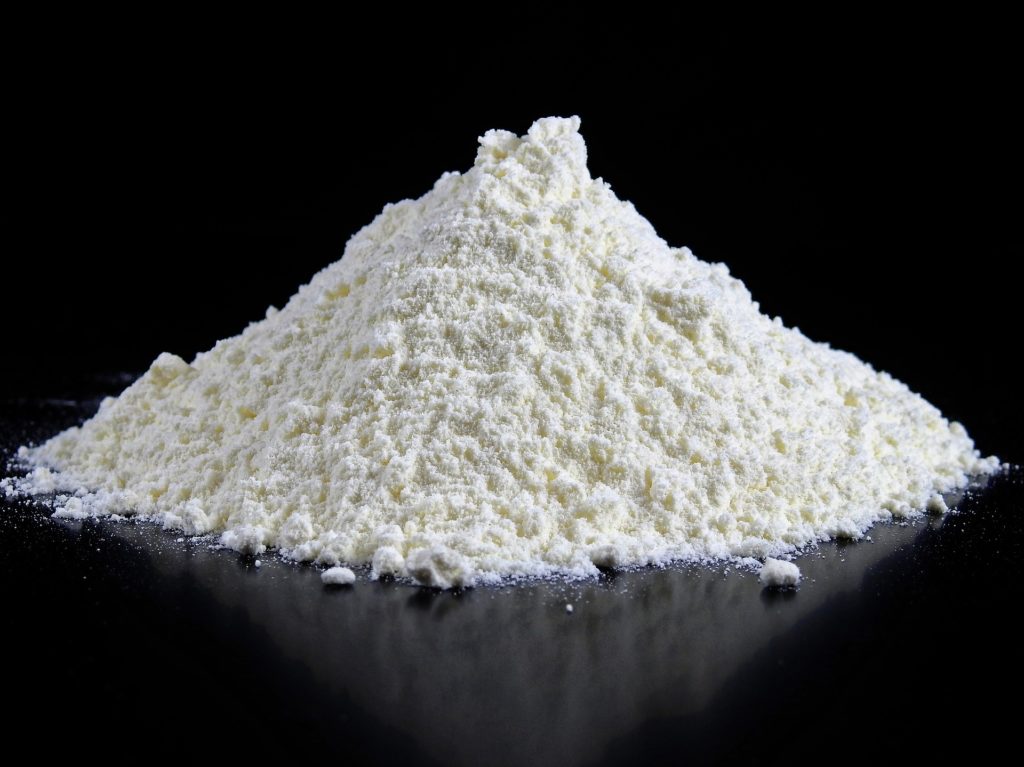How to Feed Powder Pollen Substiute
A perfect bee pollen substitute that works for every colony doesn't yet exist. But there are pollen supplements and substitute feeds that can help make up a shortfall.
Update: FeedBee nutritious pollen substitute is now available from the Bee2Bee online store!
Last week we looked at re-feeding 100% bee pollen to bees. This is our preference at Bee2Bee Beekeeping Supplies, but sometimes it's not economical or feasible for every beekeeper. This is where mixed bee pollen supplements and even pollen and protein substitutes come into play.
Bee food supplements are commonly a mixture of real pollen with soy flour or protein isolate, yeast (for more protein and a vitamin B complex), vitamin and mineral supplements and sugar or honey and sometimes an oil for added fat.
Better supplements will have a higher amount of pollen in them. But beekeepers have also had success with substitute feeds that don't contain pollen at all. These are often focused on supplementing the protein needs of the hive, though many are formulated with vitamins and minerals and other nutrients.
But getting these mixes right is tricky, and is still a work in process. A 2016 study from the CSRIO built on previous research to test several "artificial" bee diets against redgum pollen. Results showed fatty acid and mineral imbalance and excess sodium affecting bees:
One artificial diet (PI-5) contained 30% soybean protein isolate, 10% cellulose, 42% icing sugar, 12.5% water, 4.5% mixed oils and 1.3% minerals and vitamin plus cholesterol. Diet (PI-10) was
similar, but contained twice as much oil replacing icing sugar. Other treatments were redgum pollen (P), a commercial pollen substitute, Feedbee® and defatted soybean meal. Diet consumption, lifespan and head weights were significantly less for the PI diets than for P, while Feedbee® and defatted soybean-meal diets were generally intermediate. The PI diets were discovered to contain excess sodium, due to the manufacturing process. Bees consuming the PI diets had lower concentrations of magnesium, copper, iron, manganese and zinc in their bodies than did those offered P. The fatty acid content of bee bodies also varied with diet. A revised formulation is recommended with reduced sodium and modified mineral and fatty acid composition.
Interestingly, the CSRIO also found that pollen mixed with certain fats like coconut or linseed oil were more attractive than pollen alone. The importance of adding certain fats is increasingly being recognised for its role as a strong attractant to bees.
What bee pollen supplement or substitute products are available?
Dry feed for bees is commercially available for beekeepers and generally is based on a protein source such as soy flour or soy protein isolate with added minerals, vitamins and other nutritional requirements.
But as Amazing Bees concluded, the success of a supplement will probably depend on how desperate your bees are:
The supplier's instructions say "consumption rate 200g per week". Our bees barely consumed 50g over two months! They must have been on a diet.
Let's assume that feeding the substitute when the bees have absolutely no pollen stores gives them the proteins they need to roam further and collect more pollen and nectar. It kick-starts their foraging activities when they are running low on energy.
Many supplements are sold in the form of patties or sausages, or beekeepers can make their own by mixing honey or sugar syrup with a dry feed. But as Doug Somerville warns in Fat and Skinny Bees – a manual on honey bee nutrition for beekeepers, bees may consume these not for the nutrients obtained from pollen, but for any honey/sugar content. In which case a pollen supplement may simply turn into "an expensive method of feeding sugar".
Some beekeepers successfully feed bees straight up soy flour for the protein content, perhaps with the addition of yeast for added B vitamin complex. You can also add Bee2Bee's Irradiated Western Australian Pollen into your own supplementary protein mix. This can be a budget-friendly option if you have a lot of hives to feed and want to stretch the pollen further. The pollen content will make your dry feed more attractive to bees as well as providing a nutrition boost.
How to Feed Pollen Supplements or Substitutes to Bees
Beekeepers with a lot of hives may choose to bulk feed in the open. This may simply be a bucket tipped on its side, a tray, or an upside-down bucket with entrances cut at the base. While this method does have the benefit of distracting robber bees and saving the beekeeper a lot of time, the benefits have to be weighed against the risks of pests
Alternatively, Bee Feeder Frames can be used to feed dry pollen supplements or substitutes within the hive. At Bee2Bee we use our frame feeders for both pollen feeding and sugar syrup (one for each).
Protein patties placed directly in the hive can be a useful alternative, though they can grow mould or fungus in the wrong conditions. They are not recommended for areas with Small Hive Beetle, which are known to lay their eggs in the patties. Protein patties are most successful when placed as close to the brood box as possible, usually under the queen excluder.
Experiment with smaller amounts of feed at first to see how fast your bees consume them. It's a good idea to only feed amounts that your bees can consume in a couple of weeks or so.
Fat Bees Skinny Bees provides detailed information on honey bee nutrition for the Australian beekeeping context, including how to mix your own feed. Bee2Bee's quality bee pollen is for sale here, and our Frame Feeder is available here.

Read more from The Buzz.
Visit the Bee2Bee online shop for beekeeping equipment and supplies.
rexroadafteptips64.blogspot.com
Source: https://bee2bee.com.au/feeding-bees-3-bee-pollen-supplements-substitutes/
Belum ada Komentar untuk "How to Feed Powder Pollen Substiute"
Posting Komentar